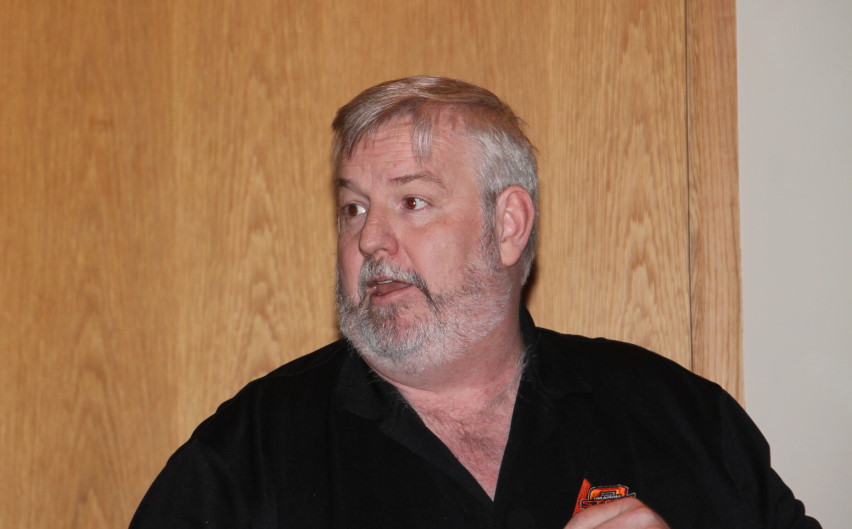
Agricultural News
High Grain Prices Encourage Forage Production and Utilization- Dr. Derrell Peel
Mon, 24 Dec 2012 10:52:45 CST
 Higher grain prices, led by sharply increased demand for corn, have provoked a variety of adjustments in agricultural markets to restore a relative balance in crop and forage prices. Higher prices for all crops are needed to simultaneously ration demand and attract resources to maintain supply in the various markets. The beef industry has considerable flexibility to adjust production systems and substitute forage for grain. These adjustments have several implications for forage use that are already occurring or may occur to a greater or lesser extent.
Higher grain prices, led by sharply increased demand for corn, have provoked a variety of adjustments in agricultural markets to restore a relative balance in crop and forage prices. Higher prices for all crops are needed to simultaneously ration demand and attract resources to maintain supply in the various markets. The beef industry has considerable flexibility to adjust production systems and substitute forage for grain. These adjustments have several implications for forage use that are already occurring or may occur to a greater or lesser extent.
Use more forage. The beef industry responds initially to high grain prices by increasing feedlot placement weights. This is reflected in feeder markets with less discounts on feeder cattle up to heavier weights. The ability to respond to this incentive has been hampered by limited cattle numbers and the drought which has reduced forage availability and forced early placements of smaller cattle into feedlots the past two years. Over time and with increased feeder supplies, the beef industry may push average feedlot placement weights higher, not only in the range of current feedlot production practices, but potentially to levels that cut days on feed enough to force changes in feedlot production systems to maintain carcass quality.
Use forage more efficiently. Cheap grain kept forage values low for many years. Forage values are now record high, in part due to the drought, but will stay higher along with other crop values. Forage use can and will be better managed with higher value. In a great many situations, grazing management can be improved to increase animal production or extend grazing seasons. Improved hay production, storage and feeding can significantly reduce hay wastage. Low value forage led to rather sloppy forage use for many years and the industry can ill afford such inefficiency in the future.
Produce more forage, more efficiently. In addition to using forage more efficiently, there are increased incentives to manage forage better for increased forage production. For example, higher value forage makes weed and brush control more valuable. Many forested areas can be opened up to allow or increase grazing access. Better grazing management, including use of proper stocking rates and grazing plans can significantly increase forage production over time.
Use different forages. Changes in forage and input values may change the optimal selection of forages, particularly for introduced forages. For example, Bermuda grass, which is very productive and popular in the southern U.S., also requires large amounts of fertilizer and weed control to realize its production potential. Bermuda grass may be less economical than some lower productivity introduced grasses that require even less inputs. In general, when inputs are cheap, technical efficiency tends to equal economic efficiency. However, when inputs are expensive, technical efficiency is often a poor indicator of economic efficiency. Expensive inputs and the desire to extend grazing seasons may also favor use of more mixed forage production and less monoculture production. More diverse pasture mixes including more legumes may be desirable in more production situations.
Use forages differently. The way forages are used could change as well. Currently forage use is almost exclusively for stocker or growing programs with a sharp demarcation between stocker and finishing programs. High grain prices could result in the development of semi-intensive cattle finishing programs that use more forage in the early stages of finishing. A more diverse set of cattle finishing programs may develop that blur the lines between stocker and finishing.
Higher grain prices and changes in relative grain and forage values may result in many changes in forage production and use. The extent and exact nature of these changes is unknown at this time. What is important is that producers be aware of expanded forage potential and be willing to consider and evaluate a much wider range of forage production possibilities in the future.
Our thanks to Oklahoma State University Extension Livestock Market Economist Dr. Derrell Peel for this latest beef cattle industry analysis- a part of an ongoing series that he and Dr. Glenn Selk produce called Cow Calf Corner.
WebReadyTM Powered by WireReady® NSI
Top Agricultural News
More Headlines...



















